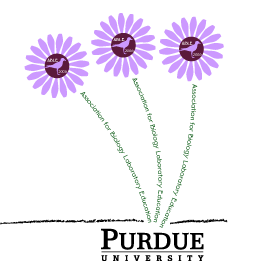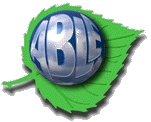Site Links
![]() ABLE 2007: University of Kentucky, Lexington, KY June 5-9. Host: Ruth Beattie
E-mail: rebeat1@uky.edu
ABLE 2007: University of Kentucky, Lexington, KY June 5-9. Host: Ruth Beattie
E-mail: rebeat1@uky.edu


Major Workshops
Wednesday June 7
Anne Goodwin, Simmons College
Use of Renilla bioluminescence to illustrate
nervous function
Renilla mulleri is a bioluminescent soft coral with a nervous system
composed of a simple nerve net. Bioluminescence in these animals occurs
in a bright wave across the surface, and is coordinated by nervous transmission. Groups
of six students clustered around an animal can easily see the light wave without
the use of magnification. The bioluminescent wave can be initiated by
mechanical, electrical or chemical stimulation, and can be used to illustrate
several concepts related to nervous function, including threshold, refractory
period and adaptation. Students complete a homework assignment prior
to the lab, in which they research mechanisms and functions of bioluminescence
in Renilla and in other organisms. In the lab, each group gives
a brief summary of the findings from the homework assignment; and examines
the bioluminescent response of Renilla to touch. Students then
make hypotheses about effects of varying the frequency and intensity of electrical
stimulation, and about neurotransmitter and drug effects. These hypotheses
are then tested by altering settings of the Grass stimulator, and by adding
solutions of epinephrine, propranolol, and other chemicals. I used this
lab in the context of the nervous systems unit of a sophomore Animal Physiology
class, but the lab would also work well with more advanced classes, in which
nervous control pathways could be better defined, or with introductory courses,
which might involve discussions of bioluminescence or defense from predators. In
this workshop, we will examine the morphology of Renilla specimens
and initiate bioluminescence using mechanical, electrical and chemical stimuli. We
will discuss applications of these experiments to various topics, and might
also discuss other biological functions of these animals, including water transport,
locomotion, and feeding responses.
<<Back